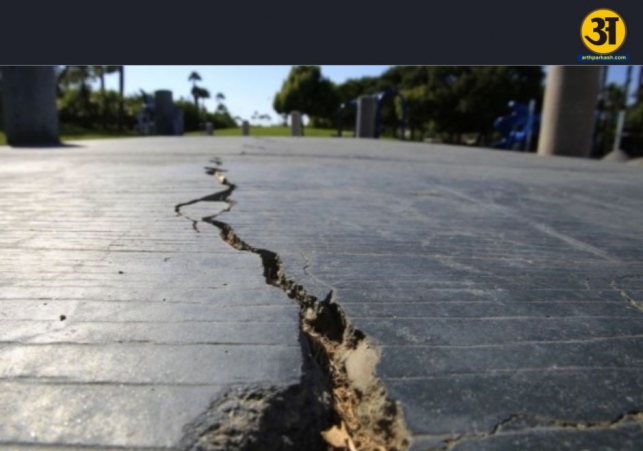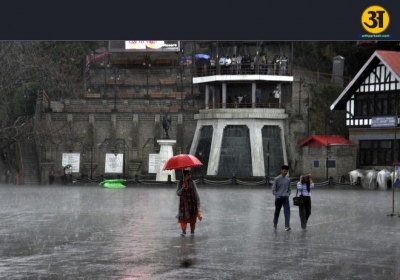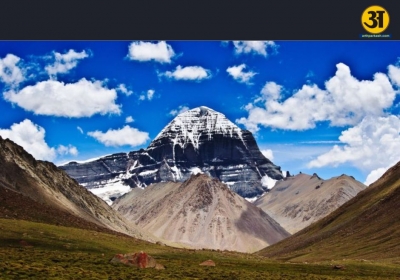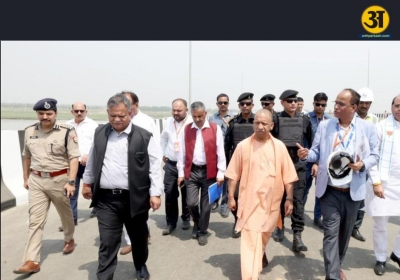
Earthquake in Afghanistan, tremors felt in Delhi
Earthquake of magnitude 5.6 strikes Afghanistan, tremors reach Delhi and nearby areas
A strong earthquake of 5.6 magnitude hit Afghanistan on Wednesday. The tremors were also felt in Delhi and other nearby areas. The quake's epicentre was about 164 kilometres east of Baghlan, a city with more than one lakh people. According to the European-Mediterranean Seismological Centre (EMSC), the quake occurred at a depth of 121 kilometres (75 miles).
At first, EMSC said the magnitude was 6.4 but later changed it to 5.6 after checking the data. The deep earthquake caused shaking in areas far from the epicentre. People in Delhi-NCR also reported feeling light tremors. Many took to social media to ask if others had also felt the earthquake.
A user posted on X (formerly Twitter), “Anyone who felt the earthquake in Delhi?” Another said, “Did ya’ll feel the earthquake in Delhi rn???” Though the tremors were light in India, they caused some fear and concern among people.
Meanwhile, another earthquake of magnitude 2.4 was reported in the Kishtwar district of Jammu and Kashmir early Wednesday morning. The National Centre for Seismology (NCS) said the quake hit at 5:14 AM IST. Its epicentre was at latitude 33.18 N and longitude 75.89 E. It was a shallow quake with a depth of just 5 kilometres. There were no reports of damage or injuries from this quake either.
These quakes were part of a series of tremors that have been shaking Asian countries in recent days. Experts are keeping a close watch on the activity in this region.
Afghanistan’s risk from natural disasters
Afghanistan often faces natural disasters such as earthquakes, floods, and landslides. The United Nations Office for the Coordination of Humanitarian Affairs (UNOCHA) says the country is highly vulnerable because of its geography and long years of conflict. Many people live in poorly built houses and don't have enough resources to prepare for or recover from such events.
Afghanistan lies between two big tectonic plates – the Indian plate and the Eurasian plate. These plates move slowly and sometimes create a lot of pressure. When the pressure is released, earthquakes occur. There is also a fault line that goes directly through Herat, a large city in western Afghanistan. The Hindu Kush mountain range in the north is also an active earthquake zone. That is why the country regularly experiences strong quakes.
When earthquakes strike, they often cause buildings to fall and roads to crack. In remote and mountainous areas, landslides can block roads and cut off villages. Rescue teams then find it hard to reach those in need. Many families lose their homes and are forced to live in the open, even in harsh weather conditions.
According to UNOCHA, the frequent earthquakes have badly affected communities already suffering from poverty and war. These disasters make it harder for people to survive and build better lives. Relief agencies are always alert and try to provide support quickly when such events happen.
On the same day, a 5.6 magnitude earthquake also hit the southern part of the Philippines. This quake occurred off the coast of the island of Mindanao. The United States Geological Survey (USGS) said the earthquake happened at a depth of 30 kilometres (18.6 miles).
The Philippine Institute of Volcanology and Seismology confirmed that the epicentre was located about 43 kilometres southwest of Maitum, a small town in a hilly and less populated area. Local officials said that the quake was strong but short. There were no reports of major damage or injuries.
Gilbert Rolifor, a fire department officer in Maitum, told AFP, “It was strong but didn’t last long. We have checked but it was negative (for damage or casualties).”
The Philippines is also in an earthquake-prone zone called the "Ring of Fire," which is around the Pacific Ocean. It has many volcanoes and faces frequent earthquakes. People in the Philippines are used to such events and are often trained in how to stay safe during quakes.
ALSO READ: Blue Origin's historic all-female NS-31 launch set for Monday amid favorable weather
ALSO READ: Earthquake of 6.2 magnitude strikes off the coast of Papua New Guinea
Importance of earthquake awareness
These recent earthquakes are reminders of how important it is to stay ready. In places like Afghanistan, India, and the Philippines, many people live in areas where earthquakes are common. Governments and local bodies must make sure that buildings are safe and that emergency plans are in place.
In Delhi and other parts of India, even though the tremors were not dangerous, people should know what to do when an earthquake happens. Staying calm and moving to safe open areas can help avoid injuries. Schools, offices, and housing societies should hold drills and teach people how to act during such events.
International organisations like the UN and the Red Cross work with countries like Afghanistan to improve disaster response. They provide emergency supplies, medical help, and temporary shelters when disasters strike. They also support training programs for local officials and volunteers. These efforts can save lives and reduce suffering.
But more support is still needed. Many buildings in earthquake zones are not built to resist shaking. Roads and communication lines can also be damaged easily. Governments must invest in safer buildings and better warning systems.
People can also help by learning basic first aid and keeping emergency kits at home. These small steps can make a big difference during a crisis.
The 5.6 magnitude earthquake in Afghanistan and the 2.4 magnitude tremor in Jammu & Kashmir were reminders of the region’s vulnerability to natural disasters. Tremors were felt as far away as Delhi, creating concern among residents. On the same day, another quake hit the southern Philippines, though it caused no major damage.
Afghanistan remains at high risk because of its location on active fault lines and its weak infrastructure. Many other Asian countries face similar risks. It is important for governments, aid agencies, and people to work together to be better prepared for such natural disasters.





